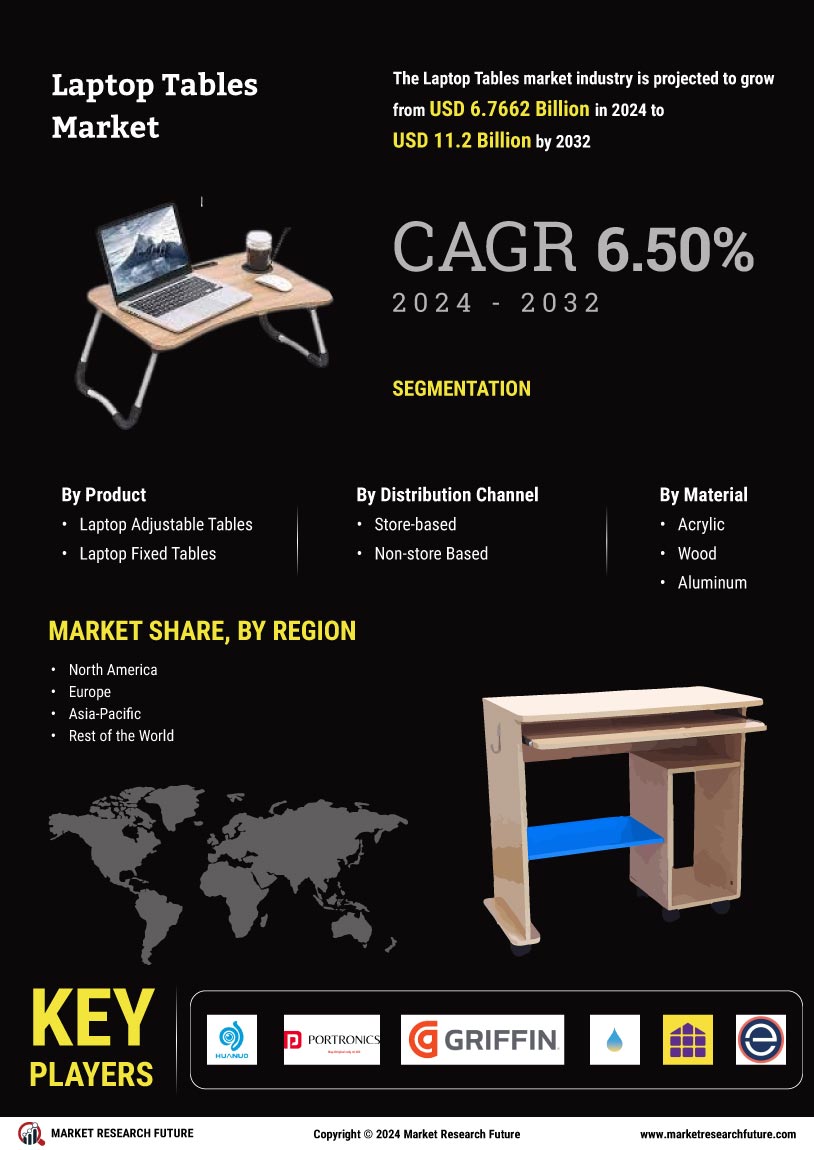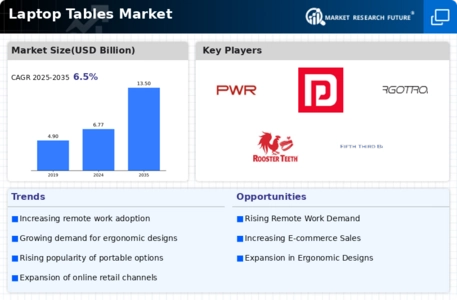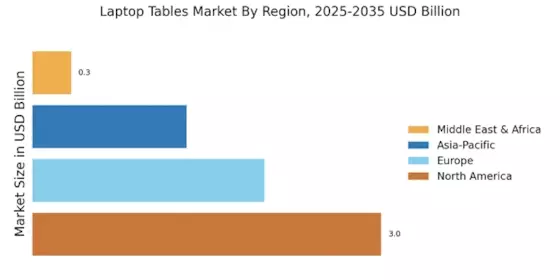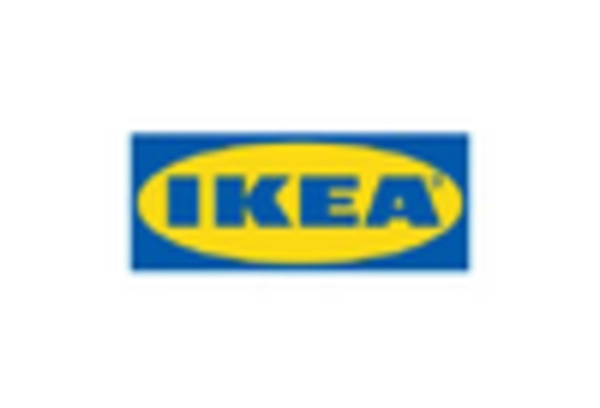The Laptop Tables Market is currently characterized by a dynamic competitive landscape, driven by increasing demand for ergonomic solutions and the rise of remote work. Key players such as IKEA (SE), Amazon (US), and Vari (US) are strategically positioning themselves to capitalize on these trends. IKEA (SE) focuses on innovation in design and sustainability, offering a range of customizable laptop tables that appeal to environmentally conscious consumers. Amazon (US), leveraging its vast distribution network, emphasizes rapid delivery and a diverse product range, while Vari (US) concentrates on high-quality, adjustable solutions that cater to the growing preference for ergonomic furniture. Collectively, these strategies contribute to a moderately fragmented market, where differentiation is increasingly based on product features and customer experience.
In terms of business tactics, companies are localizing manufacturing to reduce lead times and optimize supply chains. This approach not only enhances responsiveness to market demands but also aligns with sustainability goals by minimizing transportation emissions. The competitive structure of the Laptop Tables Market remains moderately fragmented, with several players vying for market share. The collective influence of these key players shapes pricing strategies and product offerings, fostering an environment where innovation and customer-centric solutions are paramount.
In August 2025, IKEA (SE) launched a new line of eco-friendly laptop tables made from recycled materials, reflecting its commitment to sustainability. This strategic move not only enhances IKEA's product portfolio but also positions the company as a leader in environmentally responsible furniture solutions. The introduction of these products is likely to attract a growing segment of consumers who prioritize sustainability in their purchasing decisions, thereby strengthening IKEA's market position.
In September 2025, Vari (US) announced a partnership with a leading tech company to integrate smart technology into its laptop tables. This collaboration aims to enhance user experience by providing features such as built-in charging ports and adjustable height settings controlled via a mobile app. Such innovations are indicative of Vari's focus on blending technology with ergonomic design, potentially setting new standards in the market and appealing to tech-savvy consumers.
In October 2025, Amazon (US) expanded its private label offerings in the laptop table segment, introducing a range of budget-friendly options aimed at first-time buyers and students. This strategic expansion not only diversifies Amazon's product range but also reinforces its competitive edge in the e-commerce space. By catering to price-sensitive consumers, Amazon is likely to capture a larger share of the market, particularly among younger demographics seeking affordable yet functional solutions.
As of October 2025, the Laptop Tables Market is witnessing trends such as digitalization, sustainability, and the integration of artificial intelligence in product design. Strategic alliances among companies are increasingly shaping the competitive landscape, fostering innovation and enhancing product offerings. Looking ahead, competitive differentiation is expected to evolve, with a shift from price-based competition to a focus on innovation, technology integration, and supply chain reliability. Companies that successfully navigate these trends will likely emerge as leaders in the market, setting benchmarks for quality and customer satisfaction.


















Leave a Comment